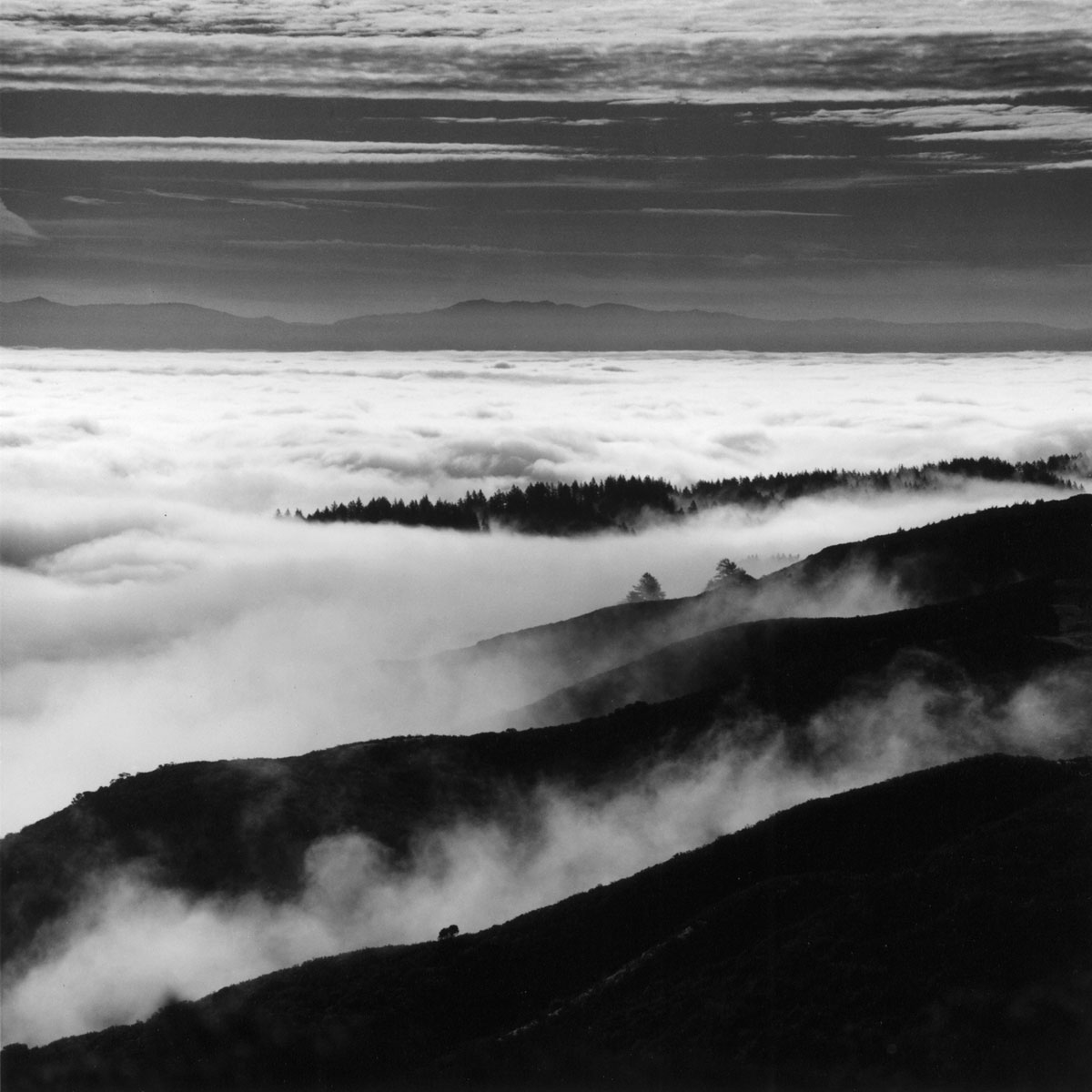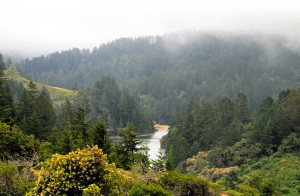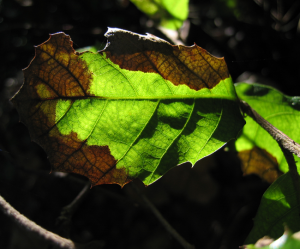n the introduction to his award-winning book The Unseen Peninsula, a collection of photographs taken over 10 years of exploring the Peninsula Watershed, Robert Buelteman writes: “I am what poet, farmer, essayist and author Wendell Berry might call a placed person, and this is my home.” It’s clear that the photographer has rooted himself in many ways: in a life spent living, working, and exploring the San Francisco peninsula; in the histories of that place; in the traditions of his art; and in the human and non-human communities that he has been a part of for many years. He spoke to Bay Nature’s Nathaniel Dolton-Thornton.
Nathaniel Dolton-Thornton: What was your experience growing up near the Peninsula Watershed as a child?
Robert Buelteman: My family moved to Woodside in 1950, when most of the roads were still gravel. And so I’ve seen first-hand all the changes in Silicon Valley and the Peninsula. When I was a child, our house was on the hill overlooking the watershed. So when I was a kid, I told my dad, “Let’s go there!” And he said, “No, no, no, you can’t go back there. That’s the watershed, that’s where we get our drinking water and they don’t let people in there.” And that was the end of the discussion.
But in my introduction to my book, I note that I had dreams of “Indians, pirates, and new worlds to explore.” You tell a child they can’t do something, and what they’re left to is their imagination. And so, since I was a little kid, I wanted to explore the watershed. Being around the watershed was really a constant reminder for me, looking out my window, that there’s a whole world out there that in my naïveté I thought mankind had absolutely nothing to do with it. There was just this huge piece of property that was there, perfect and pristine.
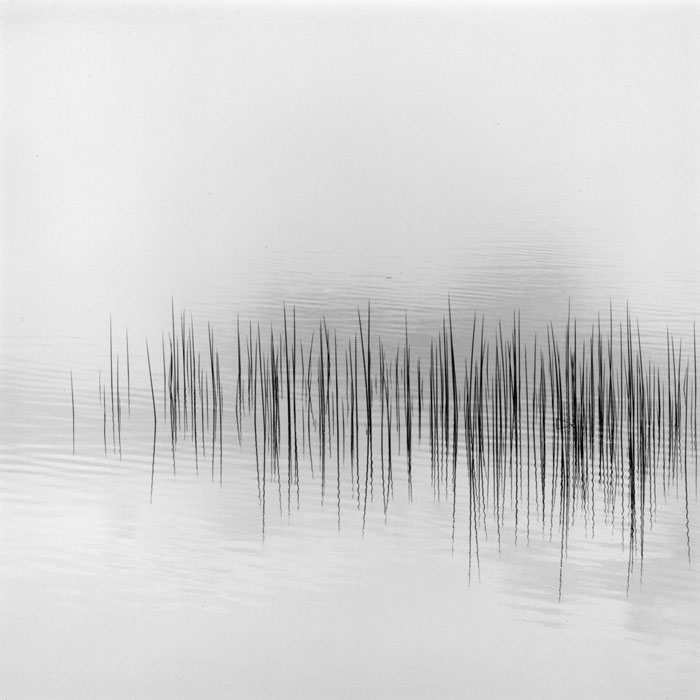
NDT: The Unseen Peninsula was the result of 10 years exploring a place in the Bay Area few people have been to. What was your experience there? Did it change over time?
RB: Well first off my experience was three years of rejection by the PUC, the water department. I contacted them and said, “Hey! I’m this terrific landscape photographer, and I’d like to photograph the land.” And they laughed. On the phone they said, “You don’t understand: we have people whose job it is to keep this property private and off the public radar. We don’t respond to press inquiries. Our whole focus is in keeping people unaware of it, or having them just take it for granted as they drive up 280. So no, we are not going to let a landscape photographer go in there and show people the glory that is this property.”
The Peninsula Watershed: To Open or Not to Open?
The 23,000 acres around Crystal Springs are prime hiking territory in an urban region desperate for more places to get outdoors. They’re also home to numerous endangered species, and critical to San Francisco’s drinking water supply. Read more about the debate over the watershed.
And it took several years, and eventually I met a kind person who shared my perspective, which was, “If we don’t show how special this place is – whether it’s now, or in your kids’ generation, or in your grandkids’ generation – it could be that the pressure for land in the Bay Area is so great that you could find yourself overwhelmed. So let’s celebrate it the way it is, and hopefully that will get like-minded people to line up and say, ‘We’ve got to protect this place.’ For all the reasons I’ve discussed: for the integrity of the water, out of pure respect for the natural world. We want to keep the core of one of the most wonderful places to live in the whole world, the San Francisco Peninsula, we want to keep the core of that as a nature preserve.”
And so finally they gave me a permit for a day – which I couldn’t believe, because I told them I’d need a few years back there. So then I wore that person down by going back every day and getting the permit renewed, which required lots of paperwork. So then they extended the one-day permit to a month, and then the one-month permit eventually got extended to six months, and then a year, and I ended up spending over 10 years on the property. And for a person like me, who drinks in natural beauty as a musician consumes music or a writer consumes the word – you know, it was like heaven!
I could drive from my studio on the coast in Montara all the way over to Millbrae or Woodside and never even cross a paved road. I had keys to all the gates – so I could get up at four in the morning, I’d be high on the ridge half an hour before sunrise, making photographs. It was the privilege of a lifetime.
As I spent time there, and got to know the place, and also got to know people on the Public Utilities Commission, and people who work for the water department, many of whom became fast friends that I still correspond with, my childhood dreams of a virgin property were displaced by understanding that this is a purpose-built place. That the roads that are there, and the people that live there, and the dams, and the aqueducts and all the rest, that they’re all built for great purpose. San Francisco wouldn’t be San Francisco without this property.
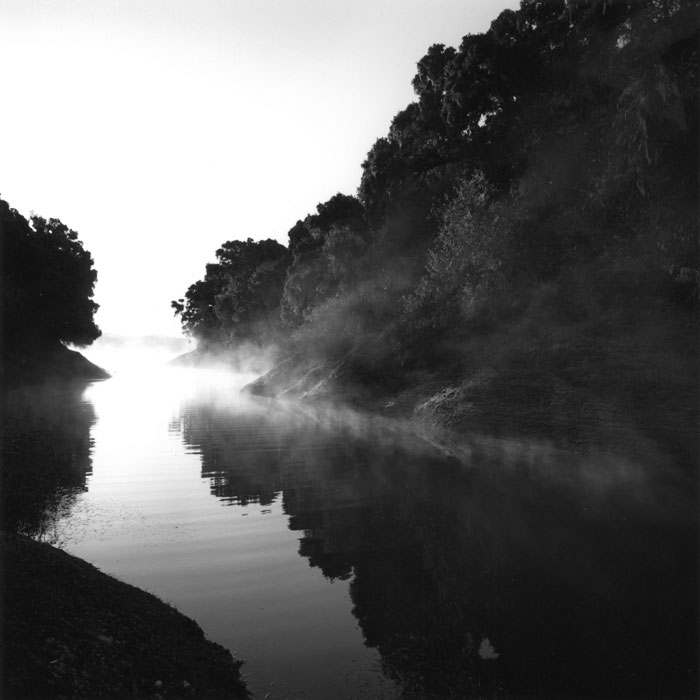
NDT: How has your experience shaped your approach to making art about the natural world?
RB: For the first 20 or 25 years my work dealt solely with the natural world. If there were traces of man, it was not a photograph that would make it into my portfolios or onto the walls of the galleries and museums. As I grew older I started noticing that one of the most damaging aspects of the way human beings hold themselves is that we hold ourselves as not being part of the natural world. And nowhere is that more clear than in the photography of Ansel Adams, and a lot of other Western landscape photographers that I revere and admire. But I started seeing that it was that cognitive break that says, “Well there’s nature over there, I’m over here, and I’m really not part of that, and that’s really not part of me.”
So with The Unseen Peninsula I began including the works of man in my landscape photographs. And while that was disturbing to some of my fellow tree huggers, I was trying to integrate what the hand of man manifests, whether it’s the dams or the plumes. I think my favorite example of that integration between nature and mankind of all things was the image “280 Sunrise,” which is an image of the emerging sun with the Interstate freeway in the foreground. That freeway always been to me a prime symbol of the public degradation of private and natural lands. But for me, I’m trying to develop a larger consciousness that says that we too are part of nature, we too are vulnerable to the changes that we make, and that we have to embrace our fundamental selves as being an integral part of the natural world.
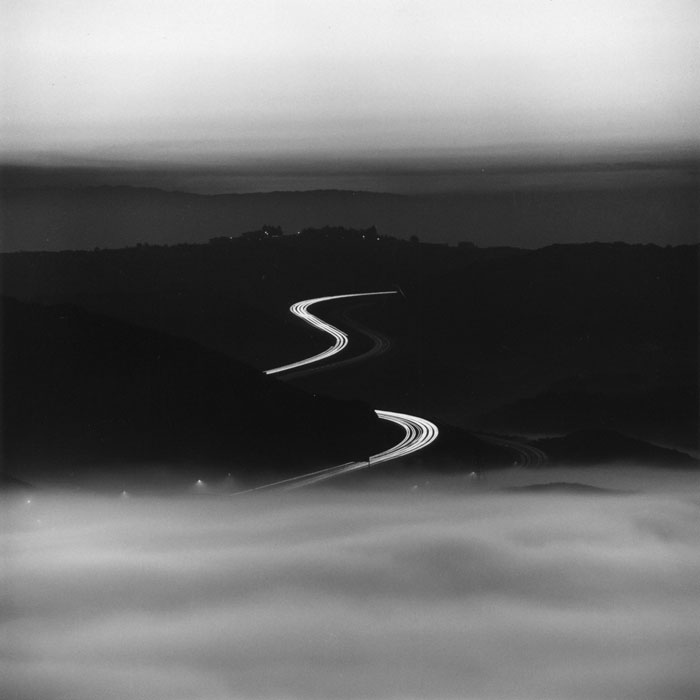
NDT: What was your most memorable moment in the Peninsula Watershed?
RB: It was a very cold winter morning. I was walking up the canyon where there is no trail – no road, no trail, no nothing, just bushwhacking – and I came around the corner and to my utter amazement here was a huge deer, a huge buck. And apparently sleeping, laying on its side, steam pouring off the body and the eyes and the nose. And I edged closer, being very cautious, knowing that I was going to startle this large buck.
Then I got closer and closer. And it turned out that the buck had just died. It had just passed away. And I walked up to it, and I touched it, and it was warm. And there was just the most extraordinary moment, where I thought, “All the things I’ve done and all the experiences I’ve had, good and bad, had brought me there to witness the passing of a great animal.”
Thinking about that buck, who’d lived his whole life on the property, not to be fenced, not to be displaced to a buck reservation, not to be killed by a hunter, or sought after by people looking for another gewgaw or picture of something they saw … it just moved me profoundly. And was something I never have forgotten.
I sat with that animal for a good hour, never took my camera out, and just reflected on how precious life is, and what a privilege it was to be, for whatever reason, called to be present at that moment in that animal’s life. I’ve seen a lot of wonderful things in the wild but, for whatever reason, that was the most moving experience of my nature-loving life.
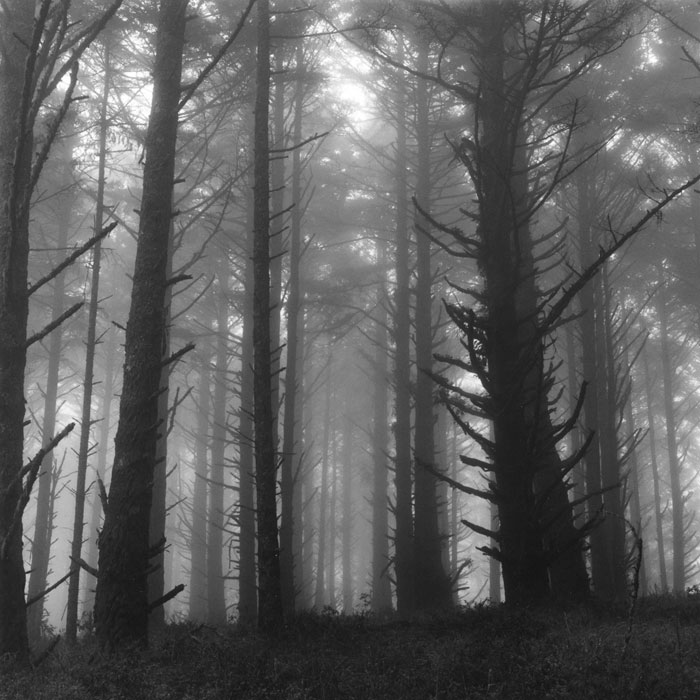
NDT: Your work has undergone a significant change since 1999. Could you explain your new practice, and has it reflected or affected a changing relationship with the natural world?
RB: I had gone through a rough patch in my life where my wife and I had lost several members of our family to cancer over a very short period of time, including her mother, my mother, and my younger sister at the age of 39. And it was a major wakeup call for me. I have always endeavored with my landscape work not to make pictures of a particular time or place, but to make iconic images that open the heart, the mind, and the memory of the people that see it.
When my third book was published in the year 2000, I had been thinking a lot about the nature of photography. And photography is the most science-based artistic medium there is, and as an industry has always had only one perspective: higher resolution images, more information in the image. The movement toward greater and greater realism in my photographs, I discovered, was actually becoming a barrier to people having an experience of what I was trying to, what I was pointing at in the photographs.
I had this idea that if I gave up cameras, lenses, computers, and black-and-white film, that I might be able to make art that was truly an opening for the viewer’s experience, versus an intellectual or cognitive function that says, “What’s that a picture of? Where was it? When was it?”
So I started making what I call “energetic photograms.” A photogram is where you take a light-sensitive medium – film, paper, anything that changes in reaction to light – and you put something on it, and you expose it to light, and then you develop it and you have the shadow or the image of the subject.
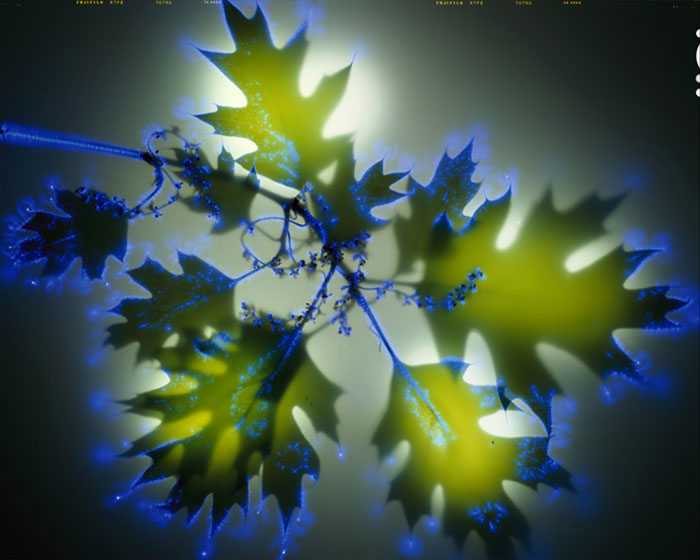
I wanted to take that a step farther using some techniques that had been invented a long time before me. And so instead of doing a traditional photogram where you might put a leaf on a piece of photographic paper and put it out in the sunlight, I’m using state of the art 8×10 color film, and instead of using sunlight or a room light to make the image, I very carefully hand-deliver the exposure energy through two different venues. One is the discharge of an 80,000 volt pulse of electricity, which illuminates the energy field around the plant; and the second source of the exposure energy is traditional white light. But I do that using a fiber optic probe the diameter of a human hair. So think flashlight the size of a human hair.
In total darkness I lay the plant on the film. I pass this huge surge of electricity through it, and then I very methodically and carefully, intentionally, paint with white light the backside of the plant as it lays on the film, thus casting a shadow onto the film of the plant subject, but also actually passing light through the plant so that some of the natural color and texture and structure of the plant is delivered to the film.
One of the greatest compliments I ever got was from the curator of photography at the Santa Barbara Museum of Art, which now holds the entire collection from Through the Green Fuse. I went down there in 1999 and showed her a print, and she was amazed. I drove back to the Bay Area, and by the time I got home she had left me a voicemail that said that, on her way home from our meeting – she’d lived on the same road for over 20 years, and had gone to and from work, you know, twice a day for 20 years – she was driving home and was looking at the weeds on the side of the road, and suddenly became aware that the cars behind her were honking at her. Because she was so entranced. What she said was, “I was just thinking about what universe of beauty might be locked in the leaves of those plants.”
So don’t forget, it’s not just mountains and landforms and rivers; heaven is at our feet every single day if we are willing to take the time to perceive it.


